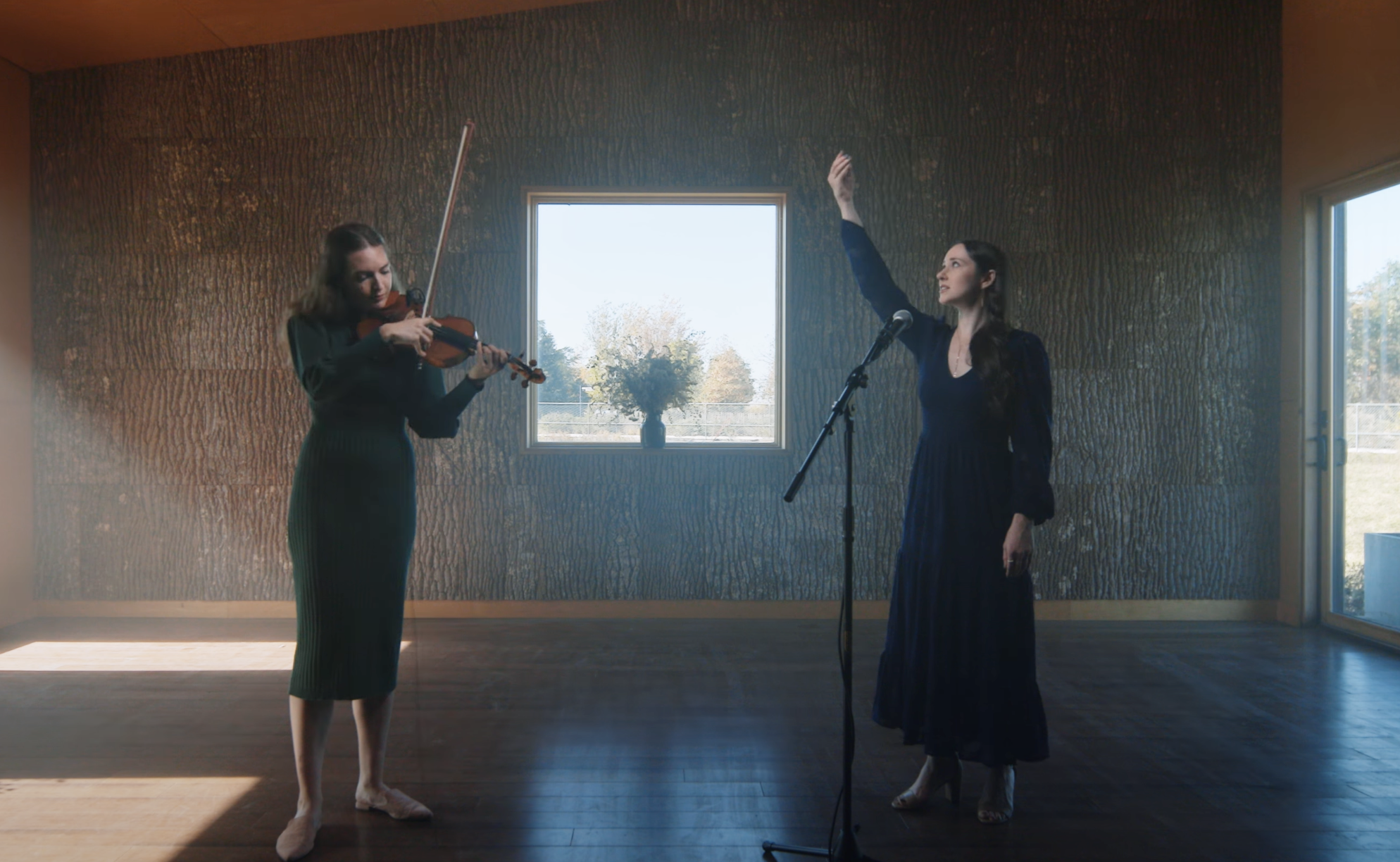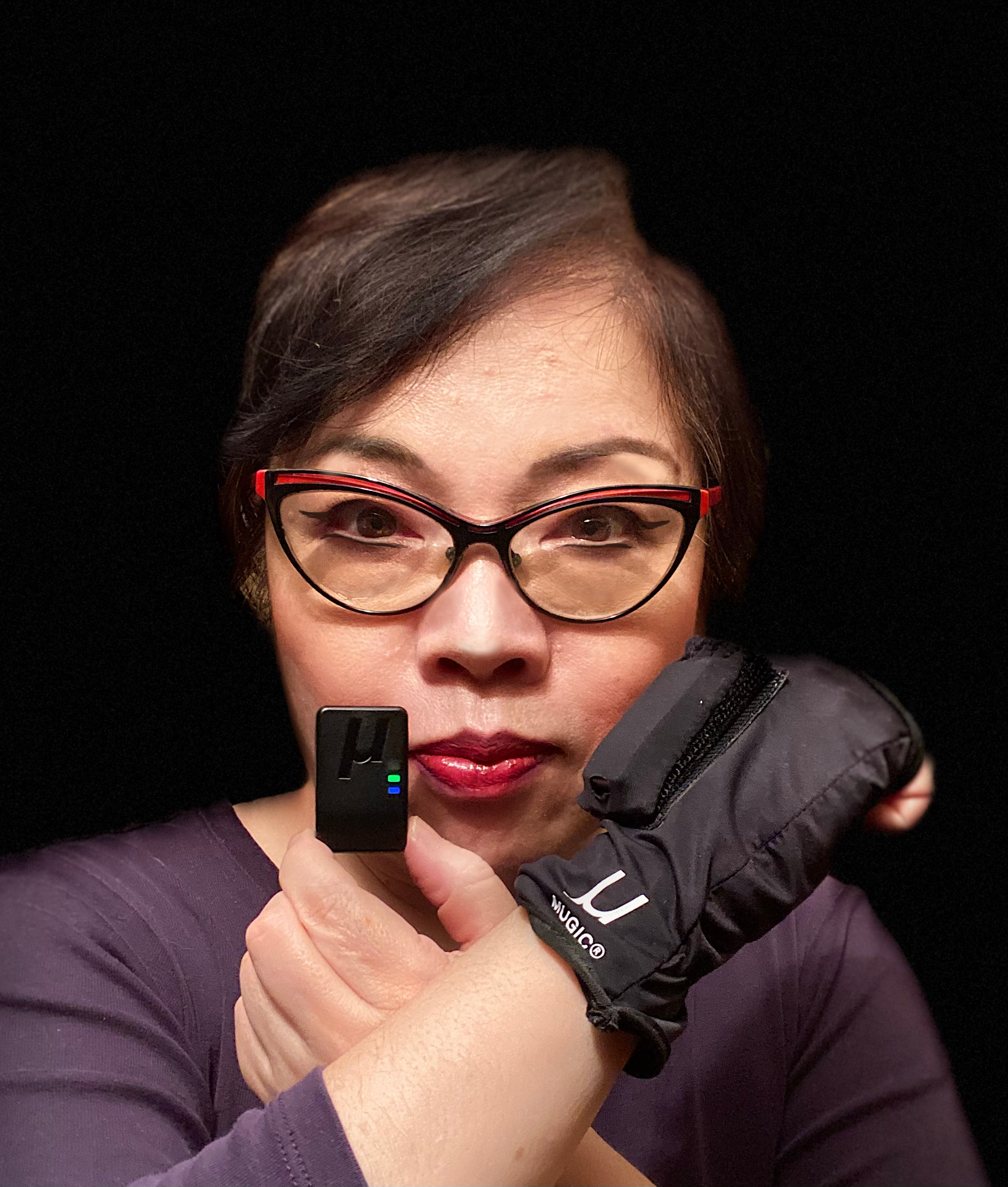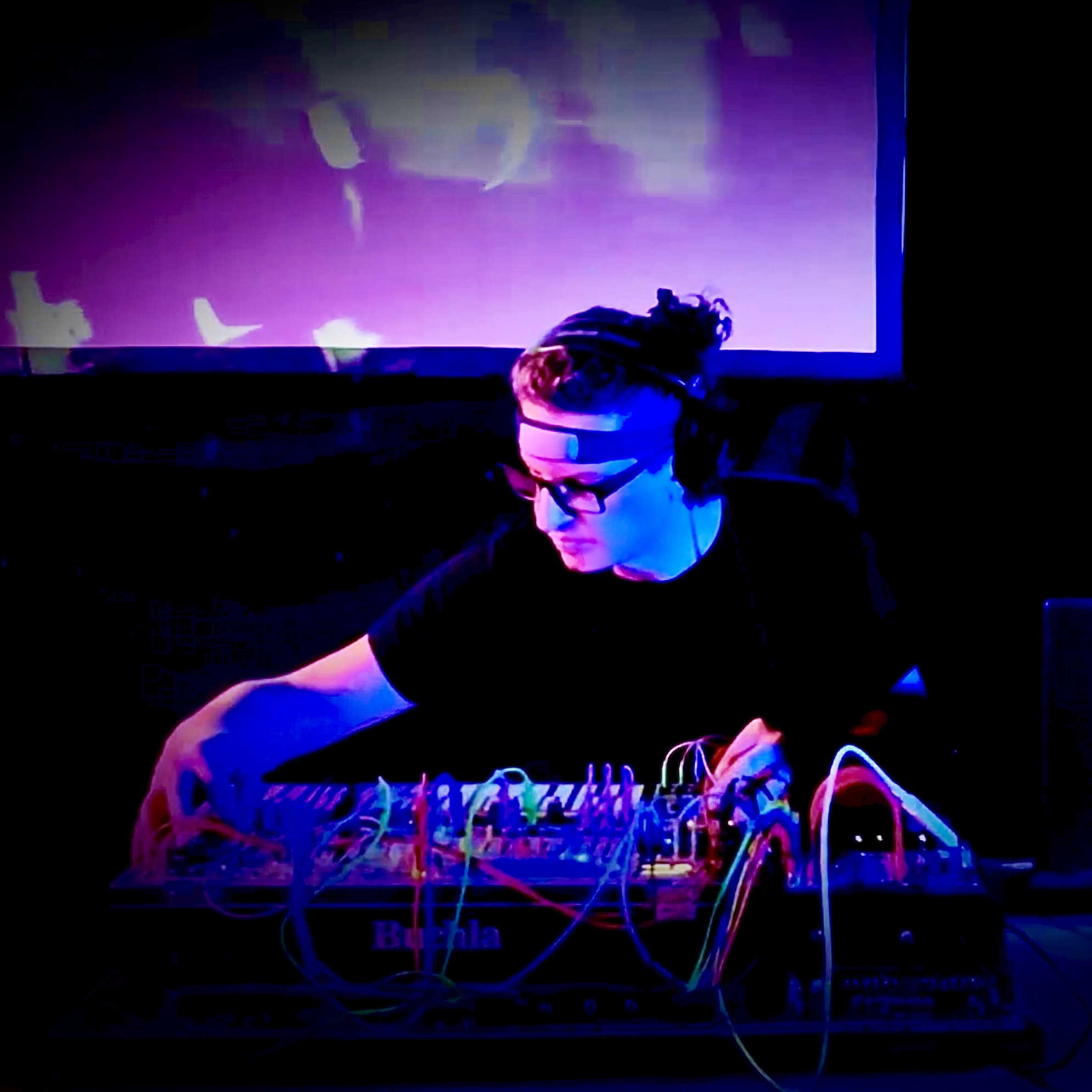
DATES AND TIMES: Saturday September 27th, 2025 @ 2:00 pm
FREE Limited Seating
LOCATION: Harvestworks Art and Technology Program Building 10a, Nolan Park, Governors Island
Featuring The Glass Clouds Ensemble, Mari Kimura, Johnny Tomasiello
Gestures of Nature is an informal concert of new music for violin, voice, live electronics & interactive visuals using MUGIC®, a motion sensing technology. We’ll begin with a demo by MUGIC creator Mari Kimura, followed by performances of four pieces of contemporary music that use interactive gesture to creatively embody the natural world – from bird calls to butterfly fractals; from atmospheric Rossby waves to New York Harbor tides. The artists will talk about their works and we’ll conclude with a Q&A! We welcome existing MUGIC users, musicians who’d like to learn more about motion sensing technology, and anyone looking to enjoy an afternoon of boundary-defying music during Governors Island Climate Week.
Schedule
2pm – MUGIC demo
2:15 – performance
3 pm – Q&A
About MUGIC: Developed by a Guggenheim and SEAMUS award-winning violinist/composer Mari Kimura, MUGIC® (Music/ User Gesture Interface Control) is a revolutionary omni-directional motion sensor that allows you to modulate and control music with gestures like bowing motion. A small electronic gadget that fits in the palm of your hand, MUGIC has been used by musicians, dancers, artists, and actors on stages around the world.


Program
abash the Little Bird (2024) by Raina Arnett/Glass Clouds Ensemble was created from Deep Listening exercises by Pauline Oliveros during an artist residency on Governors Island. Setting text from Emily Dickinson’s poem “Hope” is the thing with feathers, Arnett designed a structured improvisatory landscape from musical fragments inspired by the surroundings at Earth Matter NY’s Governors Island farm and compost site: its regenerative natural cycles, bird calls, and other sounds of nature. The musicians use gesture to trigger, develop, and modulate these fragments.
Rossby Waving (2017) by Mari Kimura, visuals by Liubo Borissov is inspired by the “Rossby Wave”, a natural atmospheric phenomenon relating to rotation of the planet. When the Rossby Wave ‘breaks’, it can cause extreme climate conditions including El Niño/La Niña. The piece consists of a ‘flexible ostinato’, a somewhat regular ‘wave’ of violin sound that’s processed and flows. The motion sensor MUGIC® detects and interprets the character of the bowing movements which affect ‘ostinato’ in its timbre and character. Some irregular and disruptive motive starts to affect the regular ostinato, sometimes mangling it. Eventually both the violin and ostinato flow freely, sometimes and sometimes not, affecting each other. Rossby Waving is dedicated to the memory of Jean-Claude Risset.
Voyage Apollonian (2011) by Mari Kimura, visuals by Ken Perlin. Mari Kimura, violin.
One day, I found a beautiful animation my friend Ken Perlin posted on his blog (http://blog.kenperlin.com) which I follow with regularity. Ken is an Oscar-winning computer graphics artist and professor at NYU, renowned for “Perlin Noise”, a technique widely used in computer graphics and motion pictures today. Ken designed this imaginative animation based on the fractal ideas called the “Apollonian Gasket.” This animation gave me an intuitive reaction that I wanted to make the music for it. His creation looked so musical that I could almost hear the sounds coming from it, which was a new experience for me. In this piece, I affect Ken’s animation using audio information from the violin, as well as my bowing motions using MUGIC®. Voyage Apollonian was commissioned by the American Festival of Microtonal Music, and premiered at their 30th anniversary concert in May, 2011.
Deriving Synchrony, Cycle II [reconfigured] (2025), music and visuals by Johnny Tomasiello.
This piece is a real-time generative and interactive audio and visual work whose primary purpose is to explore the reciprocal relationship between electrical activity in the brain and external stimuli that are generated and defined by those same physiological and physical events, through the use of a Brain-Computer Music Interface (BCMI). A gestural dimension has been introduced through the MUGIC® motion sensor as a channel for reciprocal physical data, governing the timbral and spatial articulations of the performance. Further linking this work to the natural world it inhabits, the scales and musical structure employed here are derived from NOAA tidal projections for New York Harbor, reflecting the tides surrounding Governors Island on the day of the performance, Saturday, September 27, 2025.
Bios
The Glass Clouds Ensemble is a chamber music collective that performs imaginative concerts of classical & contemporary music centered on environmental themes and community partnerships. Founded in 2022 by graduate students at Juilliard, GCE curates concerts of varying instrumentation built around violin (Raina Arnett) and voice (Marisa Karchin). GCE has been in residence at Yellow Barn and Avaloch Farm Music Institute and has received support from the Lower Manhattan Cultural Council and Chamber Music America. The ensemble has formed partnerships with local environmental organizations and community groups including Earth Matter NY, the Climate Imaginarium, Beyond Organic Design, and dance company Jody Oberfelder Projects. As part of these collaborations, GCE has commissioned new music from adventurous local composers and performed concerts at the Anita Rogers Gallery, Tenri Cultural Institute, Green-Wood Cemetery, and across Governors Island.
Mari Kimura, hailed by The New York Times as a “virtuoso playing at the edge,” is a visionary violinist, composer, and educator renowned for merging technology with music. She pioneered “subharmonics,” a groundbreaking bowing technique that extends the violin’s range below its lowest string. A Guggenheim Fellow, she has received the Fromm Commission, a residency at IRCAM, and was honored by the Carnegie Corporation as an ‘Immigrant: Pride of America,’ she is only the second Japanese national to receive this recognition, following Yoko Ono. In 2020, Kimura launched MUGIC®, a wireless motion sensor revolutionizing artistic expression, now used at leading institutions such as Harvard, UC Berkeley, Juilliard, and professional venues such as the Osaka Expo 2025, the Lincoln Center, and the Venice Biennale. Her innovation and entrepreneurial efforts earned her a Certificate of Congressional Recognition from the U.S. House of Representatives. A professor at UC Irvine and longtime Juilliard faculty member, she continues to push musical boundaries through composition and improvisation. In 2025, she was honored with the SEAMUS Award for lifetime achievement in electroacoustic music.
Johnny Tomasiello is a transdisciplinary artist and composer-researcher, with a deep interest in expanded conceptualizations of sound and time. His work employs methodologies across media, and is informed by research into neuroscience, psychophysics and biofeedback. Focused on the relationship between perception and the mechanics of physiological systems, his immersive works, installations, and performances reveal otherwise invisible processes in physiological and technological systems. His artistic explorations frequently lead to research based projects, creating a mutual exchange between science and artworks. Drawing on custom-built instruments and software, his work references mechanisms of expression and experience through storytelling derived from data sonification, biofeedback, and reciprocal physiological systems, both sonically and visually.
🌐 WEBSITE AND SOCIAL MEDIA LINKS
https://www.glasscloudsensemble.com





